
Editor's note: Today, in Part 3 of our series, "Close Encounters of the Uncomfortable Kind," we explore a list of 6 ministry do's. In Part 2, Nate showed us 7 tips on how to build a relationship with a homeless individual.
Next week, in Part 4, we conclude our series with a look at 5 suggested ministry don'ts when coming across someone who is homeless.
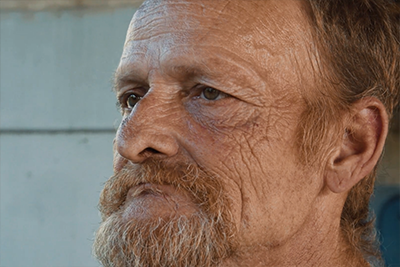 Charles Gilbert has more roommates than he can count in his wall-less home under the I-35 bridge in Dallas. There's a constant ebb and flow of men and women of all backgrounds — some nameless, some struggling with addiction, all of them bearing the mark of indignity that comes from poverty and homelessness. While some move from camp to camp, Charles has witnessed desperate others permanently escape from the bridge's edge.
Charles Gilbert has more roommates than he can count in his wall-less home under the I-35 bridge in Dallas. There's a constant ebb and flow of men and women of all backgrounds — some nameless, some struggling with addiction, all of them bearing the mark of indignity that comes from poverty and homelessness. While some move from camp to camp, Charles has witnessed desperate others permanently escape from the bridge's edge.
"When people look at me like I'm not a human being it makes me feel like I have no hope," said Charles, one of several homeless people who share their stories in Cru® Inner City's powerful Bible study, Options Together™.
| “When people look at me like I'm not a human being it makes me feel like I have no hope.” | "I only find hope in Jesus Christ and that's the only way I can find hope, because if I allow people to judge me the way that they're judging me — and let it hurt me — I would be one of those people jumping off the bridge right now." |
Like most Americans, we often reignite our compassion for the hungry and unsheltered during the nostalgic seasons of Thanksgiving and Christmas or the brutal winter days in January and February. But issues of poverty aren't tied to a calendar. Hunger and homelessness are persistent year-round. They don't pause for the stifling heat of summer or the chill of wet, winter weather, both of which intensify the loneliness of those without a home or family.
"Don't judge us," Charles urged. "Talk to us, find out what we're like and make your judgment based on what you've learned from us."
But how do we do that practically?
As the world's largest evangelistic and discipleship ministry, Cru provides transformative resources for the underserved through its Inner City division, which employs a distinctive model of providing support for church partners already invested in their communities. That means Inner City is able to target its resources to people with the most need and fewest options. Coupling that model with devoted donors and committed volunteers creates a powerful service trifecta.
While much can be said for the corporate approach, what can we do, personally, when we spot someone in need on the streets? How can each of us respond to those divine encounters that could foster God's Kingdom on earth? Can our actions bring more harm?
We turned to several members of our Inner City ministry for a list of do's and don'ts to consider when finding ourselves in the midst of such serendipitous opportunities.
The 6 Do's:
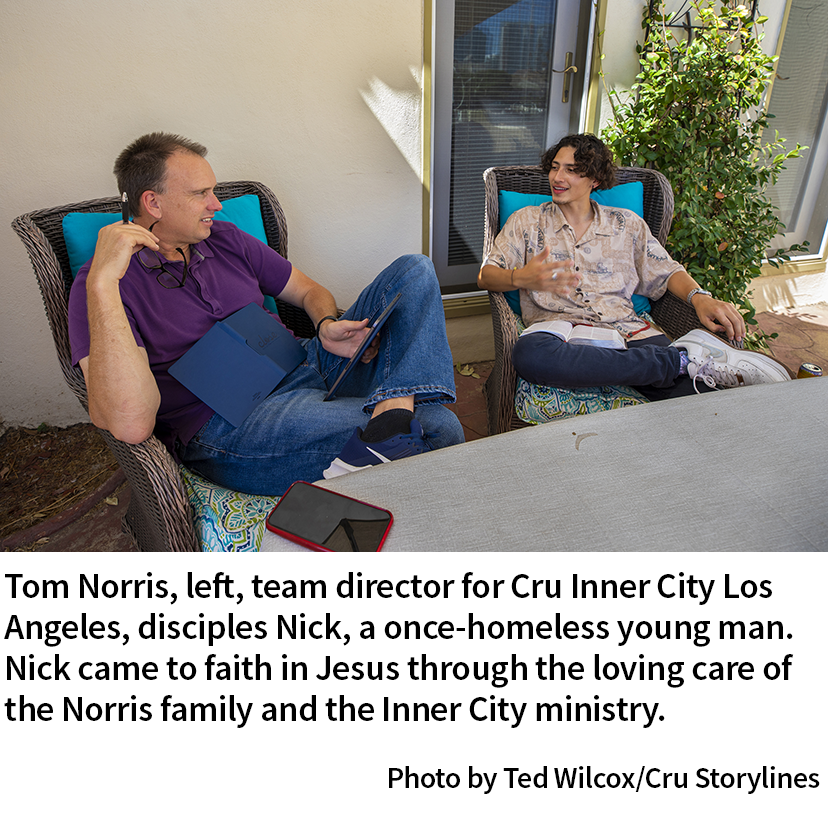 Tom Norris, former team leader for Inner City Los Angeles, said resource guides are a tangible gift for those needing assistance.
Tom Norris, former team leader for Inner City Los Angeles, said resource guides are a tangible gift for those needing assistance.
"We encourage our church partners to have options for homeless people as they interact with them," Norris said, adding that one-on-one conversations are the perfect setting to offer referrals. "Housing resources, job resources, drug treatment programs, and mental health resources are four that come to mind first."
Colleen Turrell, a member of the Detroit Inner City team, said resource guides are generally easy to acquire.
"Check with your city government and health department for a printout of the shelter and transitional housing programs, shower programs, community resource offices that assist displaced persons," she offered. "Make copies of those, fold and place inside a Ziploc sandwich bag. When you encounter a person in need of one or all of these services give them the list."
In South Michigan, Turrell said residents also have the option to call 211 to get guidance on service programs.
"Each city most likely has a similar call system," she said.
| “What options are we offering homeless people when we minister to them?” | Norris stressed that Inner City's local partner ministries should not be expected to provide in-depth services for the complex needs of their homeless neighbors, but "they should be prepared to connect interested people with those types of resources as they minister." |
"I think of our Cru Inner City tagline: Creating options together™," Norris said. "What options are we offering homeless people when we minister to them?"
Creating opportunity for marginalized communities is the subject of the seven-part Options Together™ Bible study produced by Inner City. That series features videos and stories of Inner City staff members, experts, partners, and homeless individuals, including Charles. The free online study is suitable for either individual or group settings and explores such topics as who are the poor, the Imago Dei of all persons, the scars of racism, creating options and how to move forward.
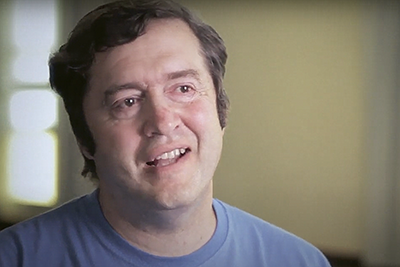 Among those featured in the Bible study is Scott Reese, a pastor and Cru partner based in Chicago. He cautions against stereotyping marginalized populations.
Among those featured in the Bible study is Scott Reese, a pastor and Cru partner based in Chicago. He cautions against stereotyping marginalized populations.
"You don't necessarily know that they're poor when you've come across them," he said. "Often, you probably shop with them or see them at the fast food stores, but the poor are all around us and all races, all ages, and they're looking for someone to care."
While resource information is an important first step, Karen Akers, the Orlando team leader, stressed the importance of engagement.
"Most homeless people say they'd just like a hello and a look in the eyes as if they were a real person," she said. "Treat them as such. Remember, they are someone's daughter, son or mother, father or sister, brother."
Grace and compassion are essential responses when dealing with someone who is unsheltered, our experts said.
"Homelessness isn't a sin," Akers said. "Personally invite them, talk to them. Ask them about themselves."
For more tangible assistance, Akers recommends keeping a bag of goodies in your car that can be easily accessed when coming across someone in need. The bags can contain single servings of meats and fruits with pop tops, bottles of water, plastic utensils and napkins. Consider including some candy and a gospel tract containing information about your church. Another option is to carry gift cards from fast food restaurants or better yet, offer to take them to lunch, Akers suggested.
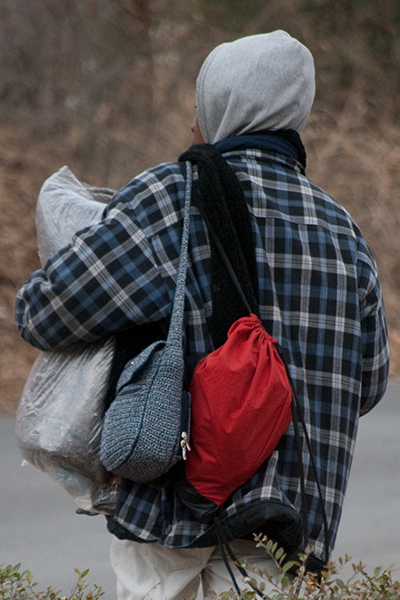 Turrell also focuses on a similar approach but, because of the harsher Michigan winters, she fills her toiletry bags with two to three thick pairs of socks, two knit caps, two pairs of gloves and two instant hand warmers. These bags supplement the Homeless Care Kits that Cru Inner City teams distribute in cities across the country during frigid months. Each Homeless Care Kit contains a heavy blanket, a pair of socks and gloves, a scarf, a hat and gospel literature.
Turrell also focuses on a similar approach but, because of the harsher Michigan winters, she fills her toiletry bags with two to three thick pairs of socks, two knit caps, two pairs of gloves and two instant hand warmers. These bags supplement the Homeless Care Kits that Cru Inner City teams distribute in cities across the country during frigid months. Each Homeless Care Kit contains a heavy blanket, a pair of socks and gloves, a scarf, a hat and gospel literature.
"Winters are long and one Care Kit is good but the inclement season outlives that kit," she said, adding, "Allow the Holy Spirit to lead you."
As part of the spiritual element in compassionately responding to the homeless you meet, bathe everything in prayer, the leaders reminded.
"Always pray the Father's will for you and those you may encounter," Turrell said. "God is fully aware of each of our situations."
While praying over a situation or individual is part of the Christian lifestyle, Jeff Hoffman, who leads the Milwaukee team, said don't be afraid to pray with the individuals. It's a signal you are inviting them into a relationship.
"It is usually warmly received," he said.
On a broader scale, Akers suggests prayerfully considering whether a personal encounter with a homeless person might become the genesis for a new partnership with your own church. How might your church live out the command of Matthew 25 to care for the least?
"Discuss it with a team, your church, take action," Akers said.
Embracing the list of recommended do's is no guarantee our responses will be perfect or welcomed. Even well-intentioned Christ-followers can inadvertently cause harm in the midst of trying to do good. That's why Akers recommends the book, "When Helping Hurts: How to Alleviate Poverty Without Hurting the Poor ... and Yourself," written by Brian Fikkert and Steve Corbett. The book tackles the complicated layers of poverty — which go well beyond a lack of finance — examining some efforts that "unintentionally undermine" efforts.
Next week, we'll conclude our series with a look at 5 suggested don'ts when encountering a homeless individual.
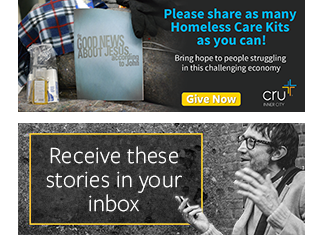
Previous Posts:
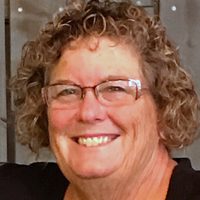 Lori Arnold serves as senior writer for Cru's inner-city ministry.
Lori Arnold serves as senior writer for Cru's inner-city ministry.
Did you find our list of do's helpful? Share this story on Facebook or other social media platforms by using this link:
©1994-2024 Cru. All Rights Reserved.